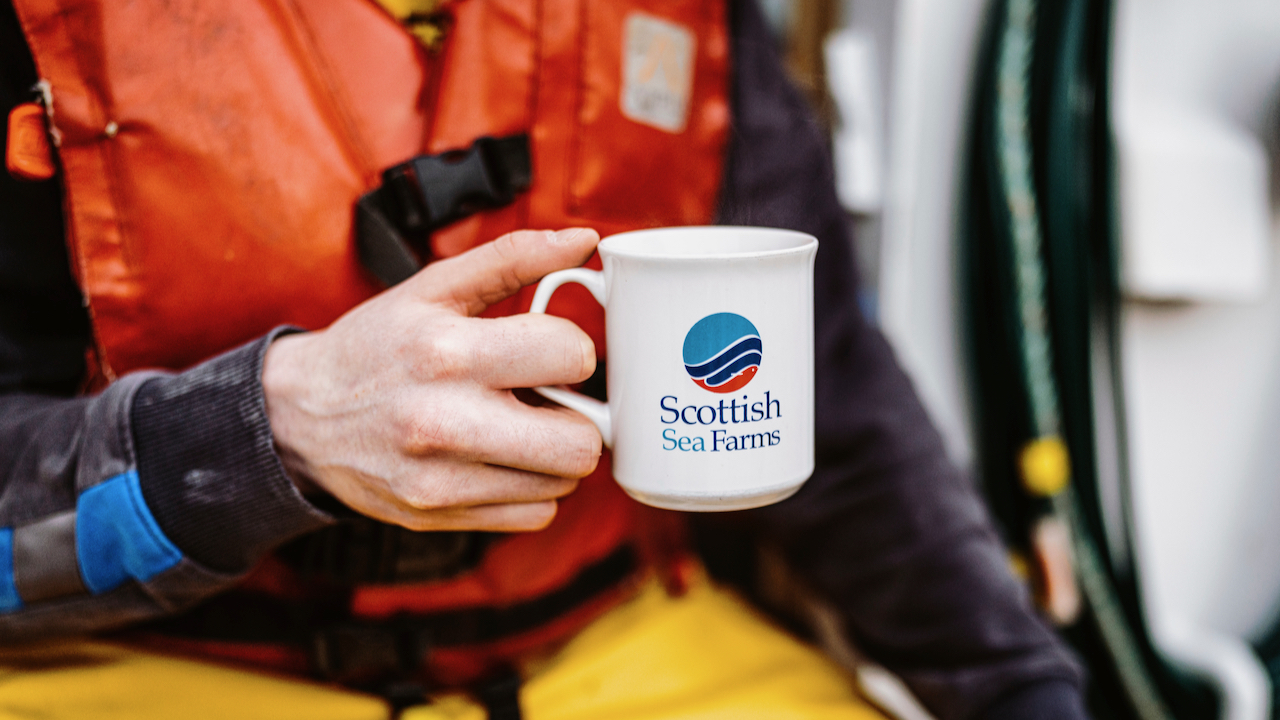In total, 16 colleagues have achieved ten years of long service; 14 have notched up 15 years; six have served 20 years; five have managed a quarter of a century; three have hit the 30-year target; and six will have worked in the company for an incredible 35 or more years.
Each major anniversary is rewarded with long service awards, including signed certificates and vouchers, to show employees how much the company values their loyalty.
‘It’s a credit to the company that we don’t have a high turnover of staff,’ said Sales Administrator Shelley Donnelly, who celebrated 20 years at Scottish Sea Farms in March. ‘The best thing for me about working here is the people in the team, who I consider friends rather than just colleagues.’
Several long-serving staff joined before the consolidation of Scottish Sea Farms into the company it is today, incorporating smaller businesses such as Golden Sea Produce and Shetland Salmon Producers.
Some 18 of the group of 50 were formerly employed by Grieg Seafood, which became part of Scottish Sea Farms in 2021.
Scottish Sea Farms Managing Director Jim Gallagher, who has been with the business for 27 years, congratulated all of the company’s long servers.
‘Our people are our greatest strength. To see so many colleagues reach these incredible milestones, some having dedicated most of their working lives to this company, is a testament not only to their commitment, but to the unique culture we’ve built together.
‘Their knowledge and mentorship are invaluable. They are the backbone of our business.’
The super six, who between them have acquired 222 years of salmon farming experience, are:
- Alastair MacFarlane, Husbandry at Shuna, 42 years in June;
- Ian Fraser, Site Manager at Knock Hatchery, 38 years in April;
- Brian MacRae, Senior Freshwater Technician at Knock Hatchery, 37 years in May;
- Colin Hughson, Senior Husbandry at Coledeep, 35 years in February;
- Robert Isbister, Site Manager at Swinning 3, 35 years in July;
- Alastair Fraser, Site Manager at Fishnish, 35 years in August.
While their individual journeys vary, their collective memories recall an era when salmon farming was still in its infancy, a farmer’s daily responsibilities involved hard physical labour, and mechanisation, let alone automation, was rudimentary.
With the arrival of vaccines, cameras, remote feeding, increasingly bigger pens, and bigger smolts, the company’s most seasoned farmers have mastered new technologies and new developments as they have been integrated into the standard way of working.
They are all modest about their impressive longevity in the business but agreed to be interviewed for The Source. Their stories, which you can read in full overleaf, are a powerful reminder of what can be achieved through dedication, adaptability and a love for what you do.
To every one of our long-serving colleagues: thank you. You inspire us, and we’re so proud to have you as part of the Scottish Sea Farms family.
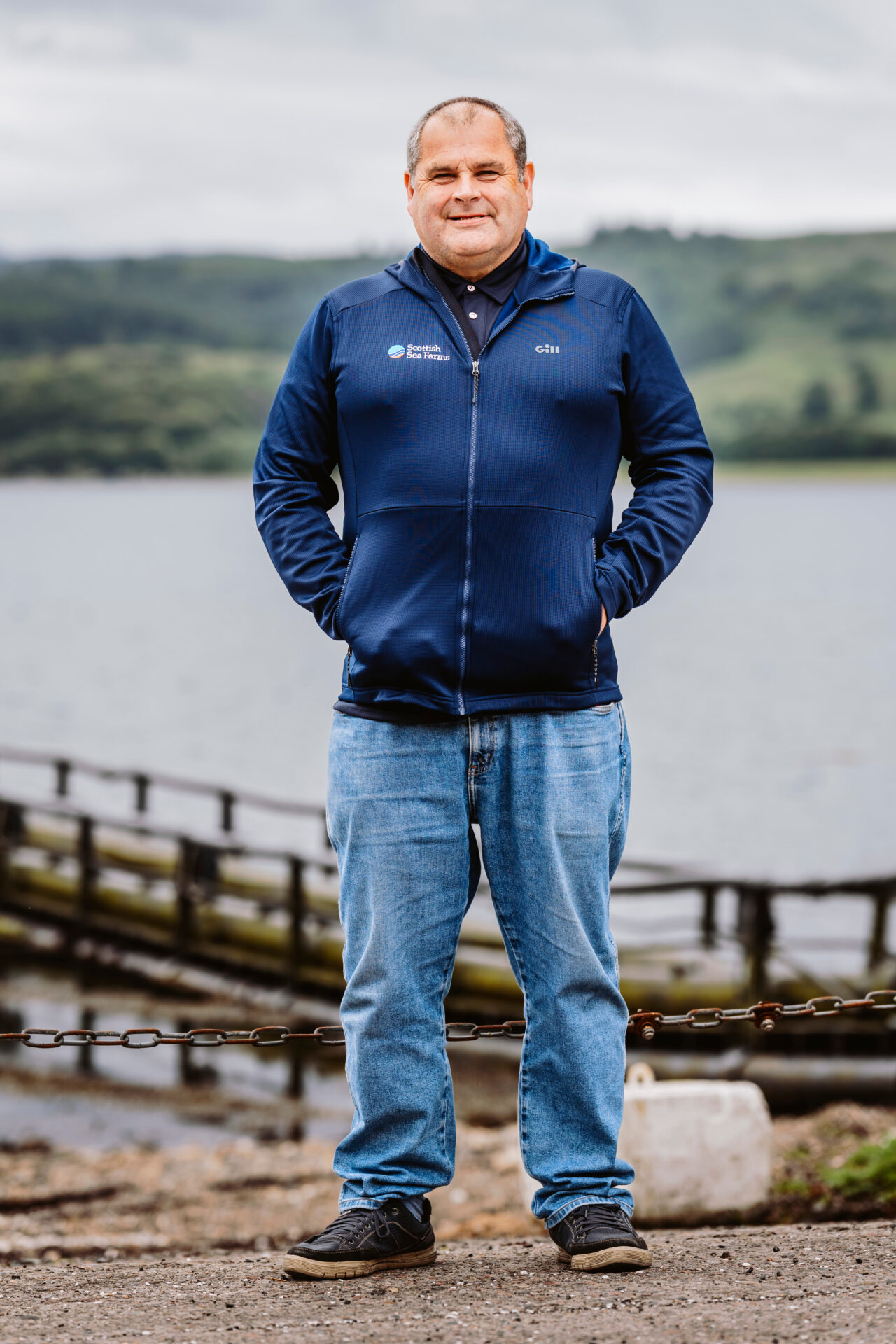
Husbandry: Shuna, Loch Linnhe
What was your first job?
I started working in the Linnhe area after a spell in terrestrial farming and on creel boats. I’ve always been based in Oban and the farms were on my doorstep. I’ve worked at every site since then, ending up at Shuna. I would have seen up to 20 crops in that time.
What are the biggest changes you have seen?
When we started it was a very small-scale operation, with 20 small pens of 12m squares, then we moved up to 15m squares and then the old-style circles came in, with no walkways. We just held on!
In those days you just went out and got on with it. We had nothing on the pens, so we used to have our tea inside an upturned harvest tub with our backs to the weather. Eventually, we got a small wooden shed on the pen and that was a wee bit more sheltered.
It was all hand feeding with 25kg bags and we used to have a competition to see who could hold the most bags – one big guy managed four or five. I worked for ten years before mechanical feeding came in. Now you can sit inside and feed the fish, no more standing out in the sleet and the snow.
And the farms are now much bigger, of course – the biggest input we took was 80,000 fish in the mid 1980s for over three sites and now there are 80,000 fish in one pen.
What are some of the highlights?
Perhaps seeing a sheep swimming past the farm at Lismore North! Seriously, though, it was great seeing the young fish and growing them up when it was a new industry. We did everything, from grading to harvesting, by hand.
After you’d done a grade and you’d taken all the big fish and put them into three different sizes, then you’d go to a pen full of 7-8kg fish and throw some pellets in and you’d just see a huge head, a lovely big salmon, coming up to the surface, and you’d think that’s a sight to see, that’s the reward of the job.
What advice would you give to new recruits?
I’d say to youngsters, give it a go, if you want to be out in the open and you’re interested in the sea and fish to start with.
What has kept you in the company?
I stayed with it because I was always interested in the boats anyway, having lived right beside the sea, and I’m an outdoors person. And I enjoy working with the fish.
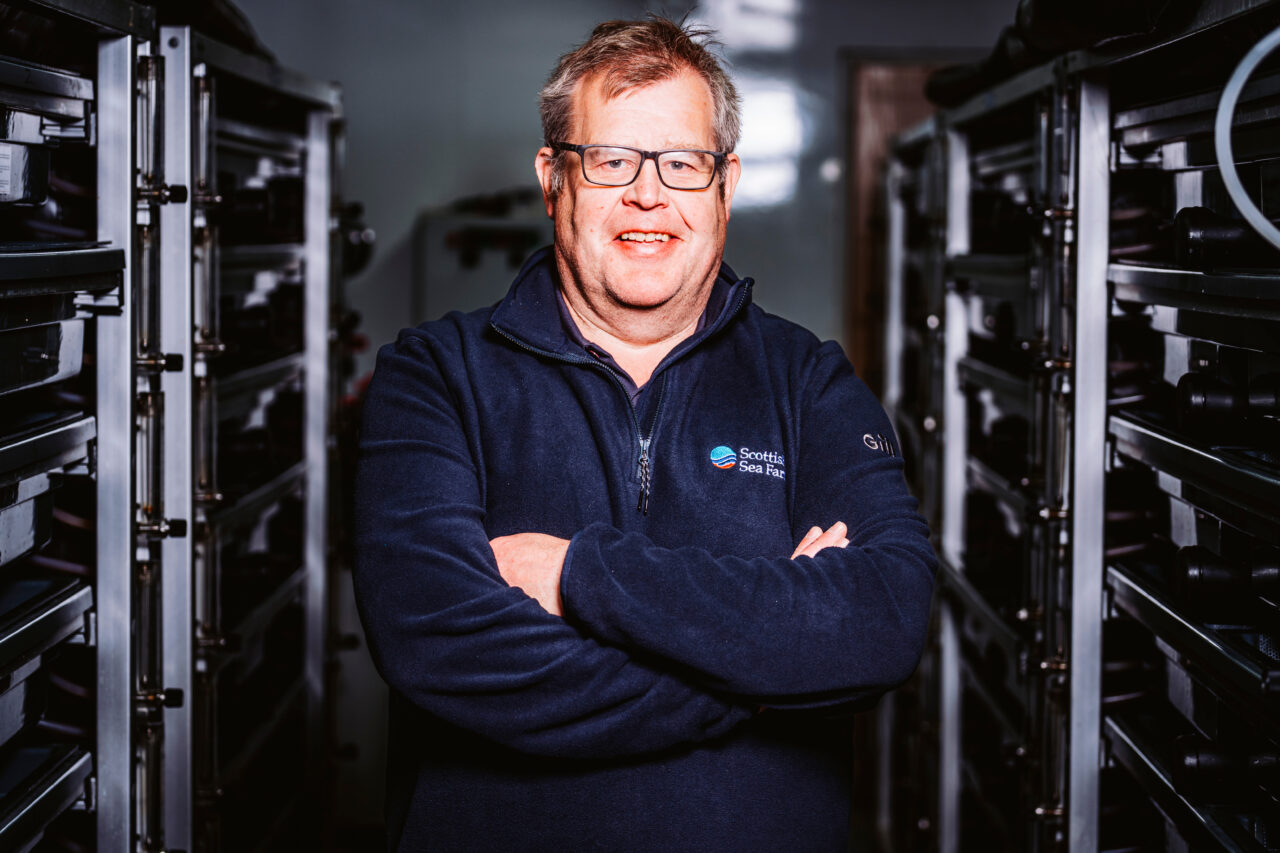
Site Manager: Knock Hatchery, Isle of Mull
What was your first job?
I started in husbandry in 1987 at a new site in Loch Frisa and also worked in Ardtornish and Loch Arienas in Morvern. Then I got the manager’s job at Frisa and also managed Loch Bar.
When ISA (infectious salmon anaemia) came along, that just about finished the industry. There were a lot of redundancies and jobs were amalgamated. I came to Knock in 1998 as the manager and have been here ever since.
What are the biggest changes?
When I first started, a smolt would take two years to go to sea, at 40g. Now we’ll be putting fish out to sea at 120g within a year. The feed is the key, we can grow the fish a lot faster, and the breeding has got better.
We did our own broodstock at Spelve and brought the salmon eggs back to Knock. You’d be in a burn washing eggs in the middle of December, it was freezing but all part of the job.
Also, the vaccination has been a huge thing. I had a spell as a vaccination manager, working under Ronnie Soutar, and it was a logistical nightmare in the early days, with various different machines and hand guns, and a dozen students to manage, working night shifts. Now we have the Maskon vaccination machine at Barcaldine, it’s a major change.
What have been the highlights?
Getting the first investment in Knock and installing the shed and bigger tanks in 2007 was one of the turning points and certainly made my life easier. And when Barcaldine came on stream it took a lot of pressure off the freshwater system we had in place.
Salmon farming when I started was a totally different ball game to what it is today. Now when there’s a new challenge, I’m confident we’ll work a way around it, there are a lot of clever people in this sector.
What advice would you give to new recruits?
It’s a good sector, with a lot of training on offer in the company, and a lot of potential. There is a much wider range of roles now – there was no environmental team, no IT team and no IT. Communications were harder, there was no landline at Frisa to begin with so you went to your work and made your calls at night. It made you self-sufficient.
What has kept you in the company?
It wasn’t planned, I just wanted to earn some money doing something I quite enjoyed. I wouldn’t say I’m a pioneer, I just like to do my thing and go home.

Senior Freshwater Technician: Knock Hatchery, Isle of Mull
What was your first job?
I knew the manager at Golden Sea Produce and he asked me if I wanted a job. I started at Frisa doing weekend shifts in 1988 and from 2005 divided my time between Knock and the other freshwater sites.
What are the biggest changes you have seen?
There have always been folk coming past wanting to have a look at what we’re doing, and when biosecurity wasn’t so prevalent, we’d give them a lifejacket and take them out on the boat and show them around the place. They were just curious about fish farming. Now visits are pre-booked and organised.
Barcaldine has been a massive change. We used to produce five to eight million eggs here whereas now it’s about one and a half million.
But the biggest change has been the size and the quality of the fish we put out, and the bigger pens, which are ten times the size and volume. The fish have a lot more room to grow in much stronger currents and so grow hardier and better.
What are some of the highlights?
There were more people back then before mechanisation, 14 or 15 guys on some of the marine sites during the summer with all the hand feeding. I went out a few weekends with them, it was very physical but it was a good laugh. There was a lot of nonsense.
But the main highlight has been every successful transition of smolts to sea, seeing the completion of that part of the cycle.
What advice would you give new recruits?
The shift patterns increasingly on offer will make a big change in the salmon sector, as well as in the businesses servicing the sector. We’ve started that here now, with every third week off. And there is a good welfare package, with wellbeing apps and generous sickness benefits.
Why has he stayed at Scottish Sea Farms so long?
Over the years I’ve found the company to be very fair and a good employer. There are other companies offering more or less the same jobs but I haven’t seen the need to move. There are a lot of good people and the managers are all very approachable. From day one, they’ve always been good at looking after you if something goes wrong.

Senior Husbandry: Coledeep, Shetland
What was your first job?
I started in fish husbandry with Shetland Salmon Producers at a site called Breigeo, with net changing being the primary job. Since then, I’ve worked at Flotta, Hoy, Sandsound, Selivoe, Burra, Mangaster, Dury Voe, Cliftsound and Gonfirth, to name a few!
What have been the biggest changes?
The biggest differences in my time have been the feeding technology, and the safety factors. Now we have boats with wheelhouses and cranes, whereas before, we went out on open boats which were 12ft long, putting out to sea in a Force 7, and gripping the edge of the boat to stay on. I thought what am I doing here!
I don’t miss the conditions we worked in, but that’s what you did then.
What have been some of the highlights?
The company recognition for my long service this year – in February I turned 65, and also celebrated 35 years in the business. Richard Darbyshire (Regional Production Manager for Shetland) came in with a cake. In fact, I had four cakes that day!
What advice would you give to new recruits?
Have a good nature.
What’s kept you in the company?
I’m not sure what else I would do. But I’m quite happy, I do the feeding mostly and it’s a major job. If I had my time again, I’d still go into salmon farming. I’m threatening to retire but my managers won’t let me and nor will my wife. I may retire with the next generation of fish but I don’t really, want to, I still want to be here if I’m able.
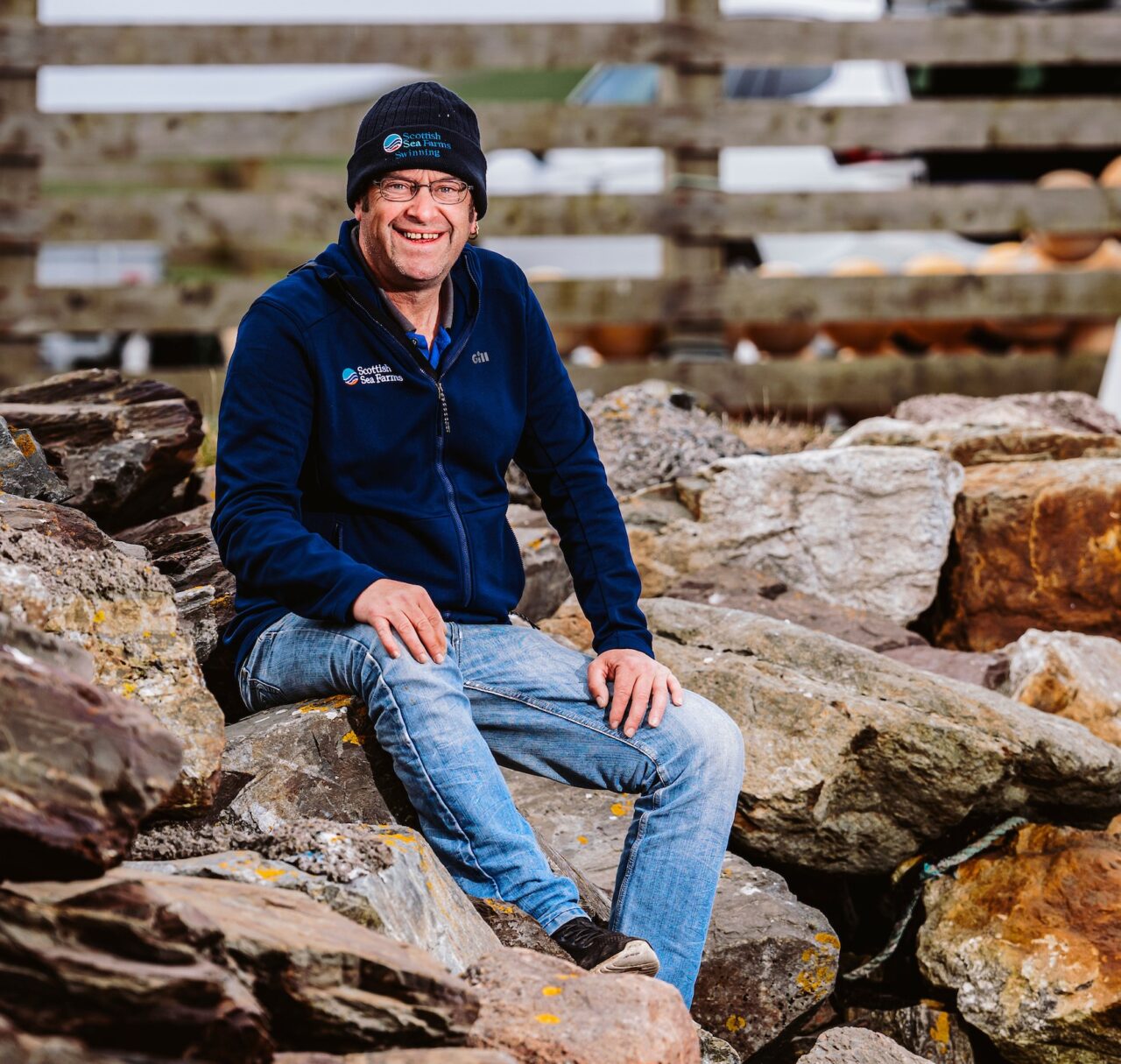
Site Manager: Swinning 3, Shetland
What was your first job?
I had a friend working for Shetland Salmon Producers and he asked if there was a job for me. I started on a YTS (Youth Training Scheme) which was the on-the-job training course for school leavers aged 16 and 17.
You went to Inverness College on a block release programme for four or five weeks then back on the farm. You were supposed to go and work for different companies – there were lots of small companies in Shetland but they’ve been consolidated now – but I always went back to Shetland Salmon Producers.
What are the biggest changes you have seen?
We had circle pens with walkways in the middle and we fed from a wheelbarrow with shovels and hand scoops.
Mechanical feeding has made the biggest difference, and the cameras, which make it so much easier to see what you’re doing, and let you spot disease or illness coming with the behaviour of the fish.
Apart from the technology, there’s a lot more focus on work ethics now and equality. It used to be a very male orientated workplace but now there are more women coming into the job which is a good thing, they are as hard working as the men.
What are some of the highlights?
We used to swim from pen to pen because the boat was always on another pen. I don’t think Health and Safety would allow us to do that now! It wasn’t that cold and we’d only do it in the summer.
There was a lot more face to face speaking back then and getting together with the staff. But the technology is good for communicating faster. The health meetings we have now, online, are handy because you get to see all the managers in the area. It keeps you in the loop with what’s going on around you.
What advice would you give new recruits?
It’s a good job, out in the open, there are fine teams, and the work is satisfying and rewarding, when it’s all going well.
What has kept you in the company?
I’ve grown up with this company and although it’s grown bigger you can always talk to anyone you want and they are always very helpful.
The job keeps you on your toes, you’re not just sitting around, and that keeps me going. I’ll be here as long as they’ll keep me.
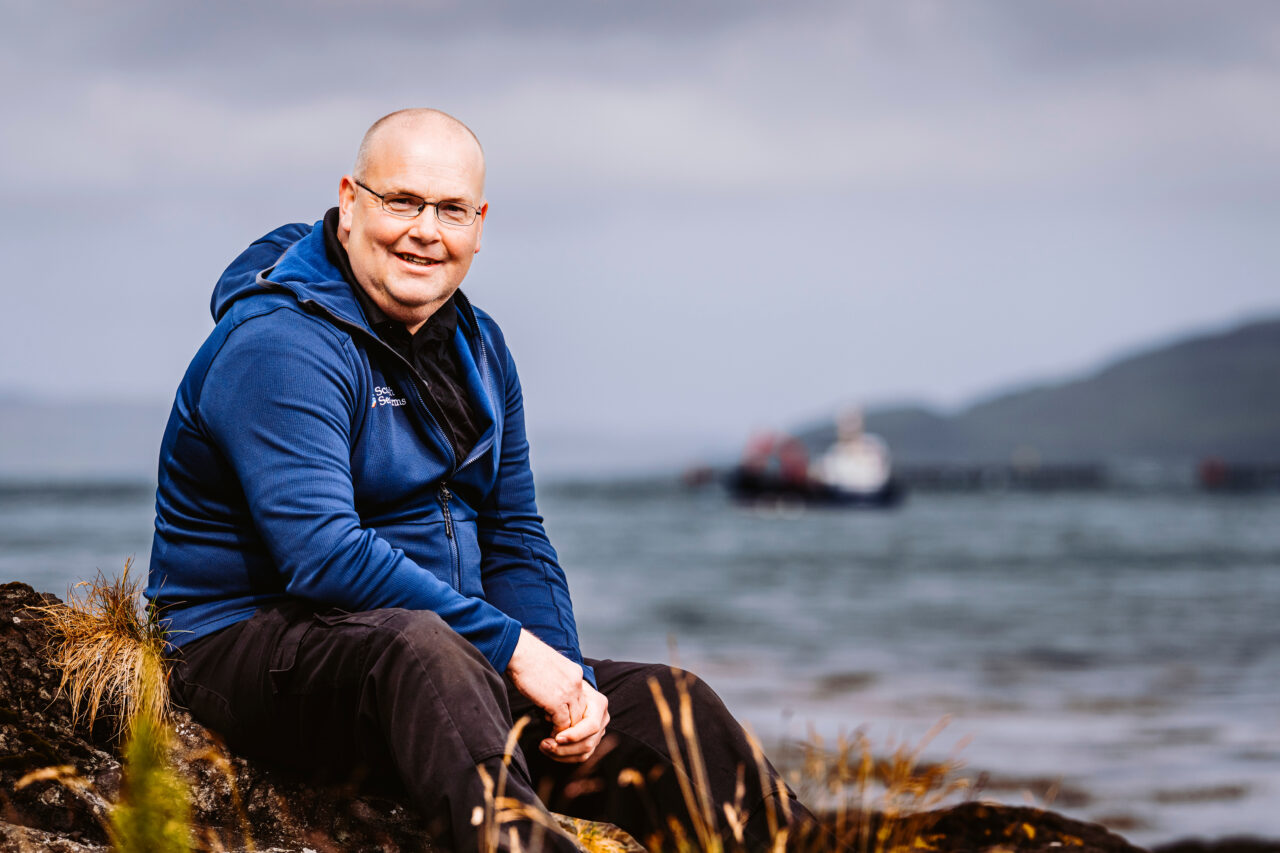
Site Manager: Fishnish, Isle of Mull
What was your first job?
I was working weekends and moved into the freshwater sites when I left school, spending about six years at the freshwater lochs, alongside my brother, Ian, and Brian Macrae. I got my first taste of a seawater site after the ISA outbreak, and became manager at Fishnish, initially in 2007-2008, and returned here to stay in 2013.
What are the biggest changes you have seen?
For me it’s the development of the pens into fewer but bigger units. We had our best ever crop last year at Fishnish A after moving to 160m pens so decided to put them in at Fishnish B too.
We went from 17 x 100m pens (across the two sites) to seven 160m, with five of those stocked. It’s so easy now, the workload is basically very little, and some days you’re pretty bored once the feeding is done, which is a good position to be in!
We can react faster and treat quicker, it’s just another world and it’s only improving. We’re putting new camera systems in for the health and welfare of the fish, and that alone is just night and day, to see the fish live and know if there’s a problem long before it becomes an issue.
Before, it was all by eye and very basic. But we did learn to be resourceful. We were left to our own devices and, because we were so remote, we just had to fix a lot of things ourselves, use our own initiative and get on with it.
Back then you’d rarely catch up with fellow managers and you found out things through word of mouth. Nowadays, there are WhatsApp groups and a lot of information between guys on the sites. Information now comes a lot quicker and that makes things easier.
What have been some of the highlights?
Getting my own farm was really good. And I’m proud of all the senior guys I’ve had over the years, nearly all of whom have progressed up to be managers themselves or boat skippers, mostly within the company. They’ve shown commitment and wanted to step up.
What advice would you give new recruits?
They have to know more, on the computer side, but we don’t have enough youngsters coming through. We encourage school visits to the farm and try to motivate them. The wages are good.
What has kept you at Scottish Sea Farms?
I have loved moving around and trying to get a site that doesn’t work to work. Scottish Sea Farms has always given me challenges and it’s got to the point where I’m asking what can I do next!
